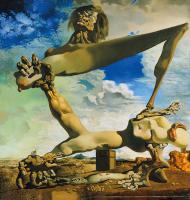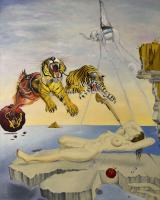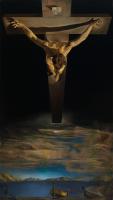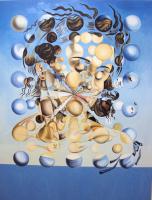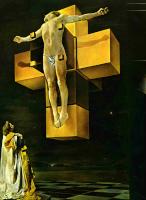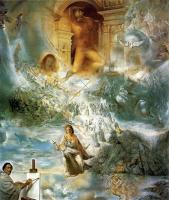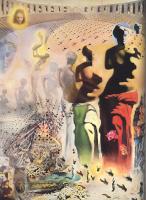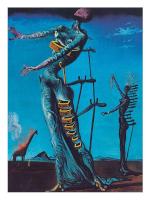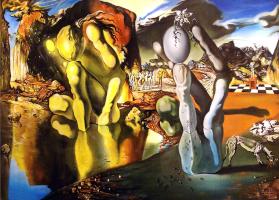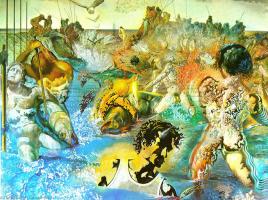Salvador Dali
Perhaps the most spectacular personality in twentieth-century painting is Salvador Dali. He was born in the Catalan region of Spain, and at seventeen went to Madrid to study at the School of Fine Arts. He was suspended and finally expelled for his outrageous behaviour and refusal to conform. He moved to Paris, where he joined and became one of the leaders of the Surrealist Movement, and as a result of his inventive genius and his flair for personal publicity he has become its most famous representative.
His egotism, narcissism and showmanship have all contributed to the exotic legend which surrounds him. (On the occasion of the International Surrealist Exhibition in London in 1936, Dali lectured in a complete deep-sea diving suit.) In 1937 he was expelled from the Surrealist Movement, and left for America. Since then he has moved from one extreme to another: from embracing revolutionary politics and producing highly provocative work, he has turned to religious pictures and right-wing orthodox views. His life and paintings have always caused violent reactions, but he has defined the aims of Surrealism more precisely than any other artist. The work of Magritte is intellectual and turns physical laws upside down to express an idea ; Dali appeals directly to the emotions for an instinctive spontaneous reaction, and he does it with enormous technical skill and originality.
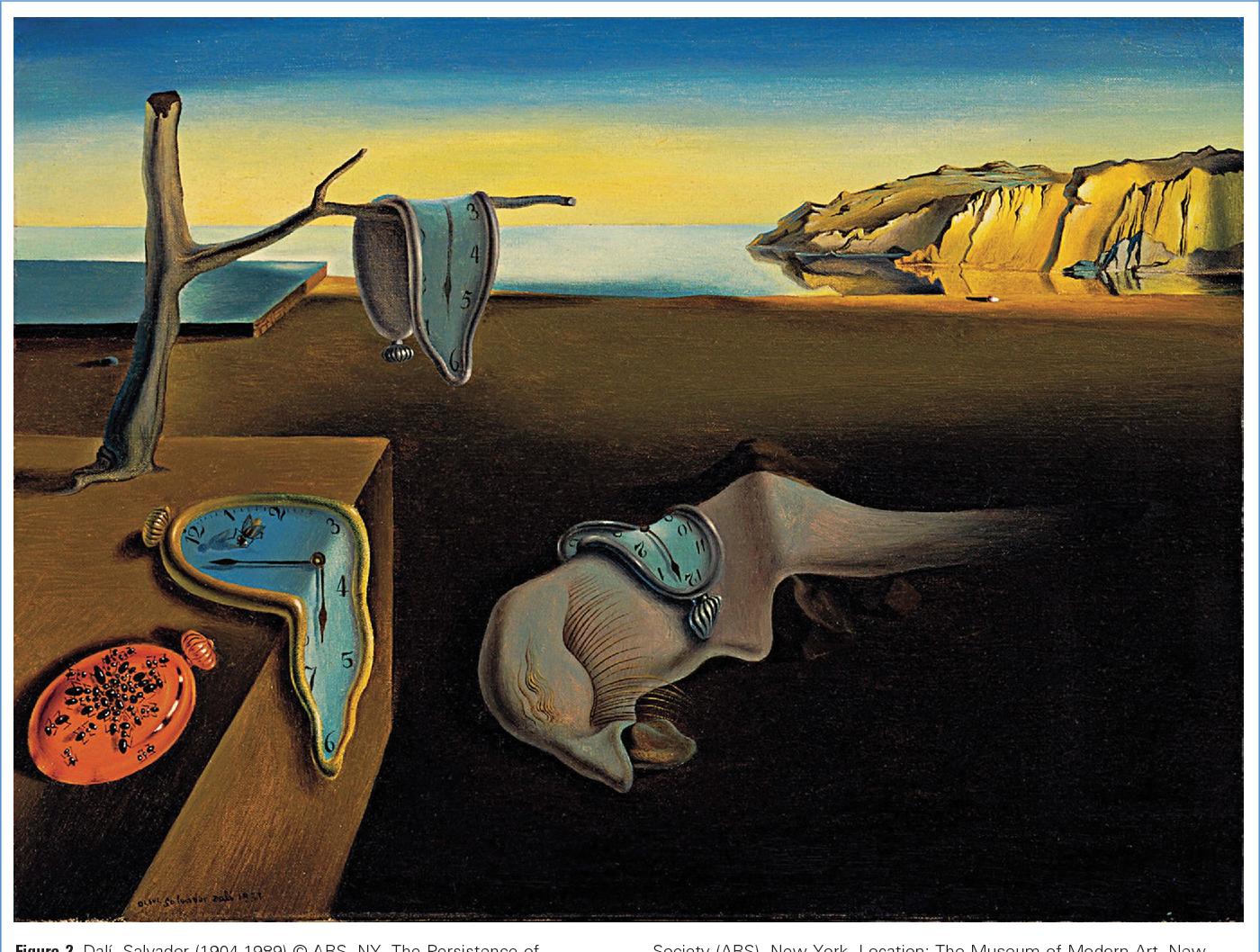 The Persistence of Memory is an early work, and one of his most fascinating. In
a flat deserted landscape, probably based on the coast of Catalonia, Dali has
created the weird images of three limp watches. They are draped like rubber or
plasticine : one from a branch of a dead tree growing out of a wooden platform;
another, with a fly on the glass, over the edge of the platform itself; and a
third folded over what might be a distorted head on the ground.
The Persistence of Memory is an early work, and one of his most fascinating. In
a flat deserted landscape, probably based on the coast of Catalonia, Dali has
created the weird images of three limp watches. They are draped like rubber or
plasticine : one from a branch of a dead tree growing out of a wooden platform;
another, with a fly on the glass, over the edge of the platform itself; and a
third folded over what might be a distorted head on the ground.
Glistening ants have gathered on the metal back of an apparently normal watch turned face downwards. The limp watches have been compared to the human tongue, and they may have some erotic symbolism. Dali himself has characteristically said that the idea came to him when he was eating a ripe Camembert cheese. His autobiography Diary of a Genius tells us that he experienced hallucinations in his childhood; as the title of the painting suggests, perhaps the subject was inspired by persistent visions and memories from the past.
Like a dream, the picture is probably impossible fully to explain. Although harmless, its images are threatening and disturbing, both because they are unexpected and because they are so convincingly real. Dali’s exaggeratedly precise drawing and brushwork and transparently clear colours in the brilliant Mediterranean light create a clinically accurate illusion of reality, which is alarming, amusing and brilliantly inventive.
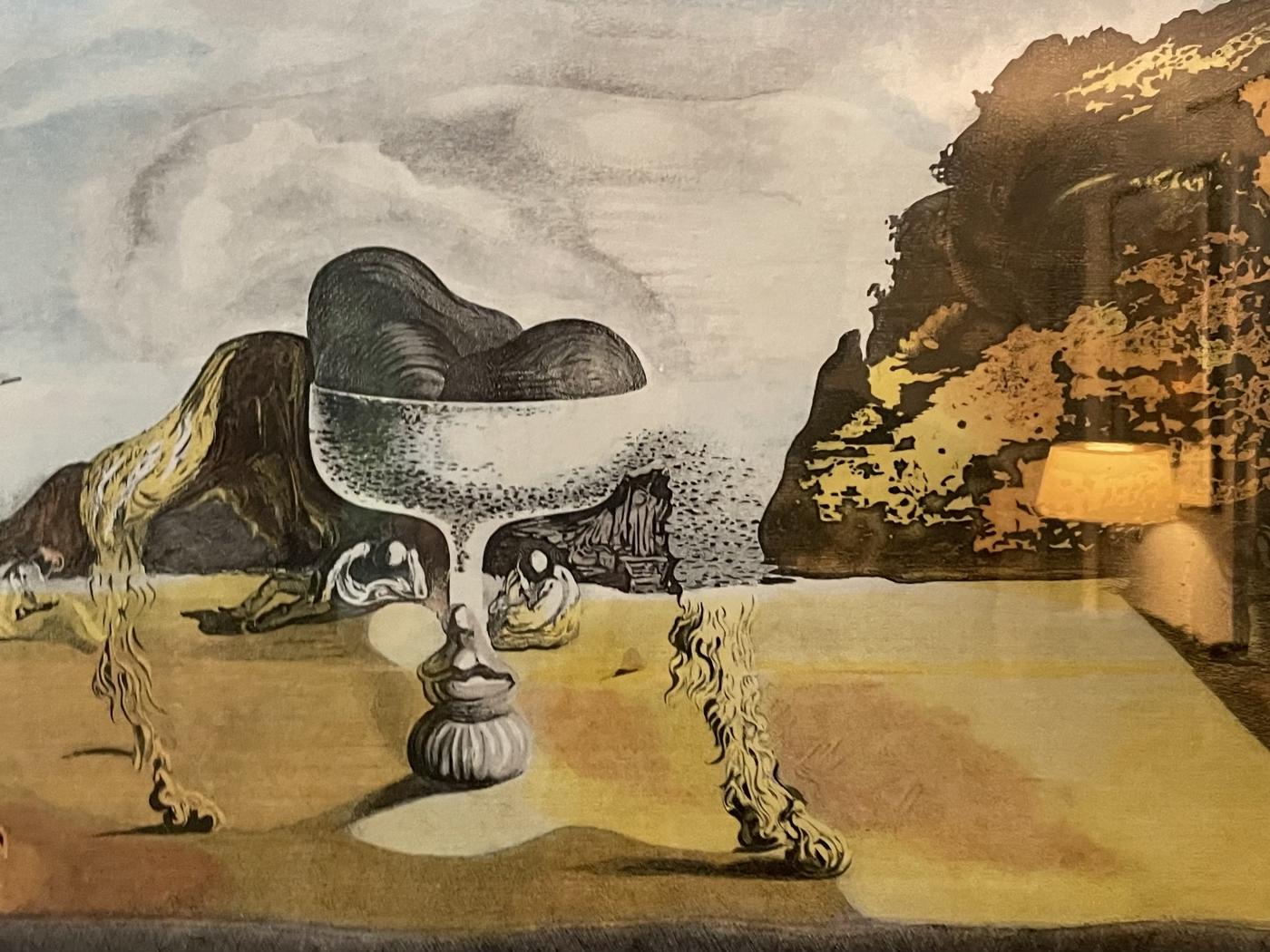 The “paranoiac-critical” method used in Dali’s “hand-painted dream photographs”
involved perceiving more than one image in a configuration. The dominant image
here is a face constructed from an urn and two men’s heads; the figs are formed
by the rocks beyond. The outline of the Afghan hound takes shape through the
windswept clouds, its head resting on the cliffs and its paws on the sand.
Dali’s friend, the poet Lorca, had been killed in the Spanish Civil War in 1936
and this may explain his apparition.
The “paranoiac-critical” method used in Dali’s “hand-painted dream photographs”
involved perceiving more than one image in a configuration. The dominant image
here is a face constructed from an urn and two men’s heads; the figs are formed
by the rocks beyond. The outline of the Afghan hound takes shape through the
windswept clouds, its head resting on the cliffs and its paws on the sand.
Dali’s friend, the poet Lorca, had been killed in the Spanish Civil War in 1936
and this may explain his apparition.


